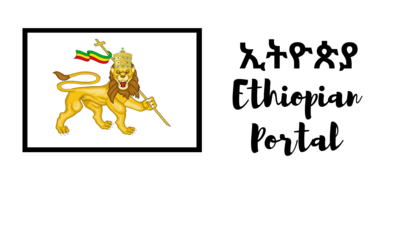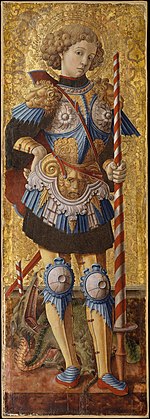Introduction
Federal Democratic Republic of Ethiopia የኢትዮጵያ ፌደራላዊ ዴሞክራሲያዊ ሪፐብሊክ (Amharic) | |
|---|---|
| Anthem: ወደፊት ገስግሺ ፣ ውድ እናት ኢትዮጵያ (English: "March Forward, Dear Mother Ethiopia") | |
 | |
| ISO 3166 code | ET |
Ethiopia, officially the Federal Democratic Republic of Ethiopia, is a tropical country located in the Horn of Africa region of East Africa. It shares borders with Eritrea to the north, Djibouti to the northeast, Somalia to the Northeast, East and Southeast, Kenya to the South, South Sudan to the West, and Sudan to the Northwest. Ethiopia covers a land area of 1,112,000 square kilometres (472,000 sq. miles). , it is home to around 128 million inhabitants, making it the 13th-most populous country in the world, the 2nd-most populous in Africa after Nigeria, and the most populated landlocked country on Earth. The national capital and largest city, Addis Ababa, lies several kilometres west of the East African Rift that splits the country into the African and Somali tectonic plates.
Anatomically modern humans emerged from modern-day Ethiopia and set out for the Near East and elsewhere in the Middle Paleolithic period. Southwestern Ethiopia has been proposed as a possible homeland of the Afroasiatic language family. In 980 BC, the Kingdom of D'mt extended its realm over Eritrea and the northern region of Ethiopia, while the Kingdom of Aksum maintained a unified civilization in the region for 900 years. Christianity was embraced by the kingdom in 330, and Islam arrived by the first Hijra in 615. After the collapse of Aksum in 960, the Zagwe dynasty ruled the north-central parts of Ethiopia until being overthrown by Yekuno Amlak in 1270, inaugurating the Ethiopian Empire and the Solomonic dynasty, claimed descent from the biblical Solomon and Queen of Sheba under their son Menelik I. By the 14th century, the empire had grown in prestige through territorial expansion and fighting against adjacent territories; most notably, the Ethiopian–Adal War (1529–1543) contributed to fragmentation of the empire, which ultimately fell under a decentralization known as Zemene Mesafint in the mid-18th century. Emperor Tewodros II ended Zemene Mesafint at the beginning of his reign in 1855, marking the reunification and modernization of Ethiopia. (Full article...)
Selected article -
"Starvin' Marvin" is the eighth episode of the first season of the American animated television series South Park. It first aired on Comedy Central in the United States on November 19, 1997. In the episode, Cartman, Kenny, Kyle and Stan send money to an African charity hoping to get a sports watch, but are instead sent an Ethiopian child whom they dub "Starvin' Marvin". Later, Cartman is accidentally sent to Ethiopia, where he learns activist Sally Struthers is hoarding the charity's food for herself. In an accompanying subplot, after genetically engineered turkeys attack South Park residents, Chef rallies the residents to fight back, in a parody of the film Braveheart.
The episode was written and directed by series co-creator Trey Parker, being his first solo credit as writer-director for the show and was also the first South Park Thanksgiving-themed episode. It simultaneously served as a satire on American indifference toward impoverished countries, and on the humanitarianism industry. (Full article...)Selected biography -

Zewditu (Ge'ez: ዘውዲቱ, born Askala Maryam; 29 April 1876 – 2 April 1930) was Empress of Ethiopia from 1916 until her death in 1930. The first female head of an internationally recognized country in Africa in the 19th and 20th centuries, and the first and only empress regnant of the Ethiopian Empire, her reign was noted for the reforms of her Regent and designated heir Ras Tafari Makonnen (who succeeded her as Emperor Haile Selassie I), about which she was at best ambivalent and often stridently opposed, due to her staunch conservatism and strong religious devotion. She is the most recent empress regnant, as well as the last female Ethiopian head of state until the 2018 election of Sahle-Work Zewde as president.
Empress Zewditu sought to maintain Ethiopia's traditional values during her reign through a series of conservative policies, resisting rapid modernization. Ascending to the throne in 1916 after the deposition of Emperor Iyasu V, she was supported by conservative factions and the Ethiopian Orthodox Church, who saw her as a stabilizing figure. Her rule was characterized by efforts to uphold Ethiopian traditions and the Orthodox Christian faith, contrasting with the modernizing ambitions of her regent, Ras Tafari Makonnen, later known as Emperor Haile Selassie. (Full article...)General images -
Related portals
Geography
Countries
WikiProjects
Main WikiProject
Related WikiProjects
Africa • Countries • Eritrea • African military history task force
Things you can do
- Visit the Ethiopian Wikipedians' notice board.
- The noticeboard is the central forum for information and discussion on editing related to Ethiopia.
- Comment at the Ethiopian deletion sorting page.
- This page lists deletion discussions on topics relating to Ethiopia
Selected pictures
Did you know -

- ... that Aguil Chut-Deng took 22 child refugees from South Sudan to Ethiopia during civil war so that they could attend school?
- ... that medieval Ethiopian kings claimed to be descended from Solomon?
- ... that Tsadkan Gebretensae, one of the top commanders of Tigray forces in the conflict against the Ethiopian government, previously served as chief of staff of the Ethiopian National Defense Force?
- ... that the government of Ethiopia's SNNP Region supported local governments calling for a referendum to secede from the region?
- ... that Liberian paramount chief Tamba Taylor worked as a tailor and claimed to have sewn clothes for Ethiopian emperor Haile Selassie and Ghanaian president Kwame Nkrumah?
- ... that Quintin Johnstone advocated giving control of an American-governed law school to native Ethiopians?
In the news
Categories
Topics
Other Ethiopia-connected Wikipedias
Wikimedia
The following Wikimedia Foundation sister projects provide more on this subject:
-
Commons
Free media repository -
Wikibooks
Free textbooks and manuals -
Wikidata
Free knowledge base -
Wikinews
Free-content news -
Wikiquote
Collection of quotations -
Wikisource
Free-content library -
Wikiversity
Free learning tools -
Wikivoyage
Free travel guide -
Wiktionary
Dictionary and thesaurus
Other portals



































































